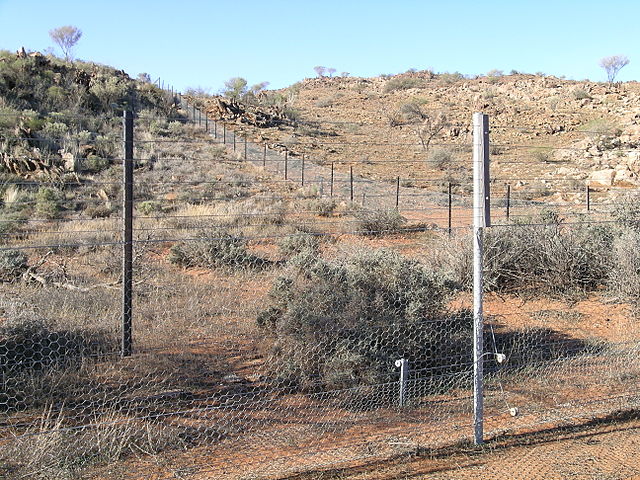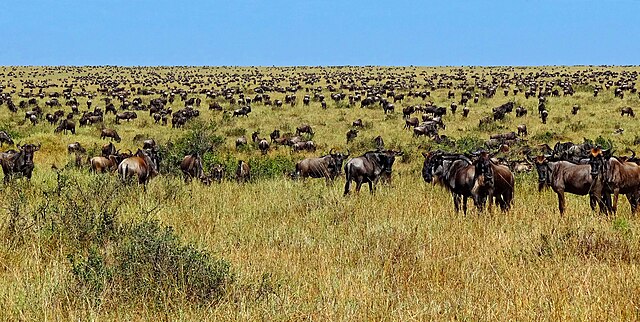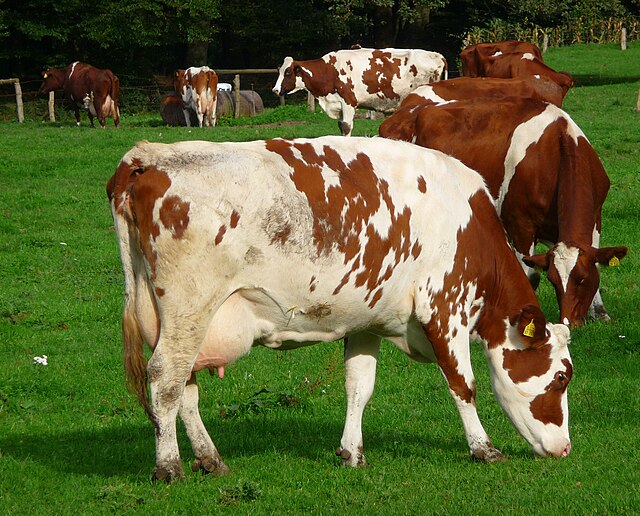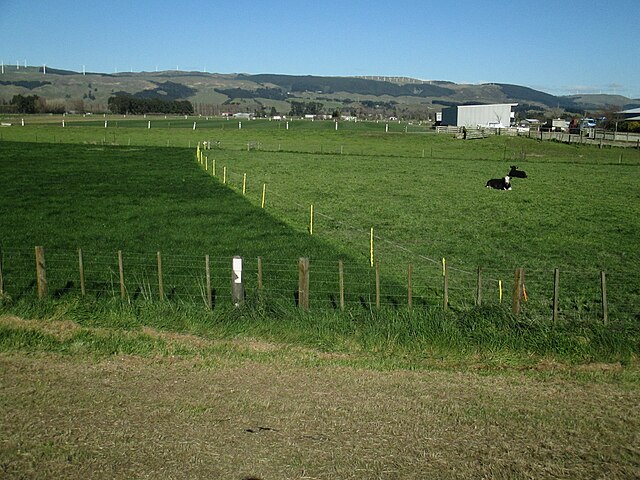Overgrazing occurs when plants are exposed to intensive grazing for extended periods of time, or without sufficient recovery periods. It can be caused by either livestock in poorly managed agricultural applications, game reserves, or nature reserves. It can also be caused by immobile, travel restricted populations of native or non-native wild animals.
Overgrazed area in western New South Wales (Australia), by loss of native flora, in the upper right corner
Satellite image of the border between Israel and Egypt. The Egyptian side, to the left, is overgrazed.
Penned goats in an overgrazed landscape (Norte Chico, Chile)
Huge herd of migratory wildebeest in Masai Mara during their annual migration shows landscape not overgrazed
In agriculture, grazing is a method of animal husbandry whereby domestic livestock are allowed outdoors to free range and consume wild vegetations in order to convert the otherwise indigestible cellulose within grass and other forages into meat, milk, wool and other animal products, often on land that is unsuitable for arable farming.
Dairy cattle grazing in Germany
The domestication of ruminants by 7000 BC, like these fat-tailed sheep in Afghanistan, provided nomads across the Middle East and central Asia with a reliable source of food.
The dark green portion of this pasture in New Zealand is fenced off to allow the grass to regrow before it is grazed again.
A Maasai herdsman grazing his cattle inside the Ngorongoro crater








